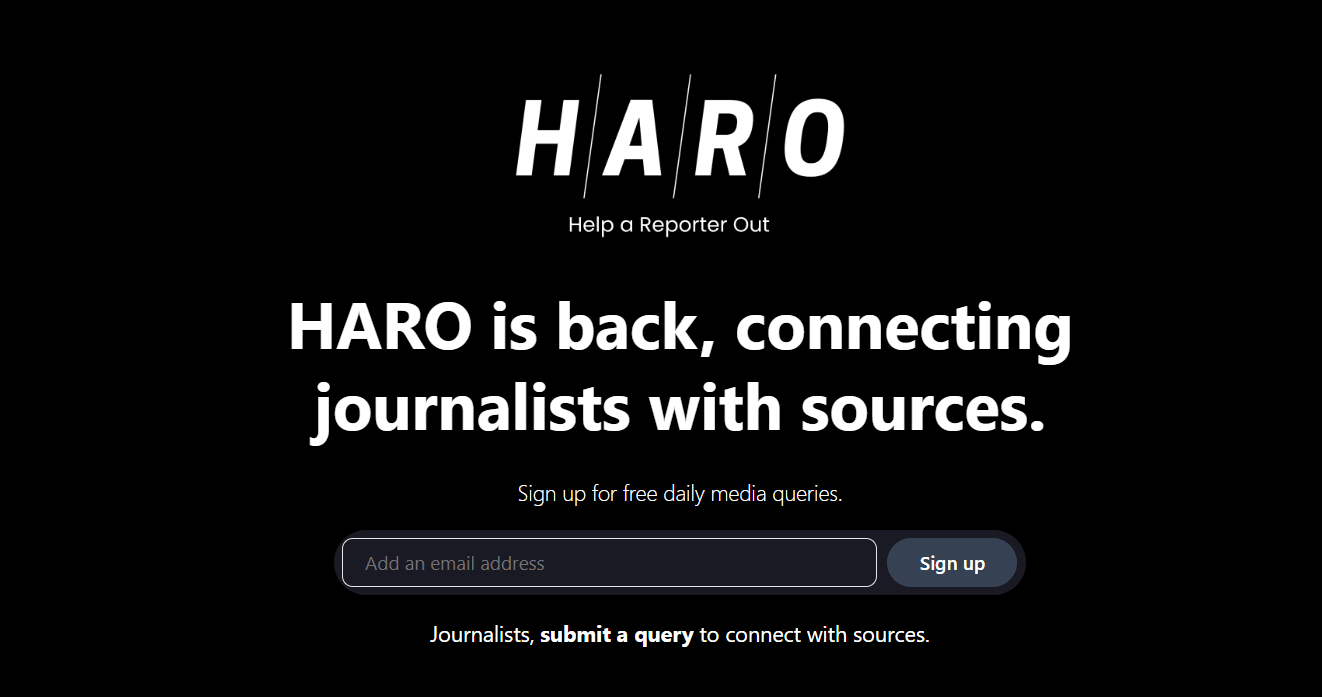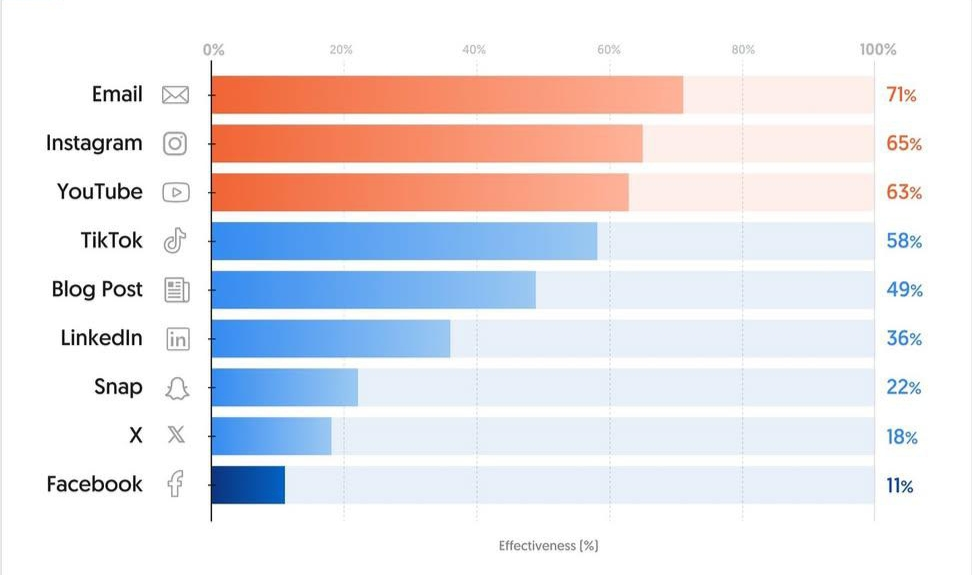Image Credit: HARO
In the ever-evolving world of SEO, one thing remains constant: quality backlinks matter. As Google continues to focus on authority, relevance, and trust, building backlinks through ethical, white-hat methods has become more important than ever. One of the most effective and often underutilized strategies for this is using HARO (Help A Reporter Out). If you’re new to HARO or unsure how to make the most of it in 2025, this guide will take you through everything you need to know to start earning powerful backlinks from trusted publications.
What is HARO and Why It Matters for Link Building
Help A Reporter Out, commonly known as HARO, is a platform designed to link journalists with knowledgeable sources who can provide expert insights for their stories. Every day, journalists post queries for expert input on specific topics they’re writing about. These could be anything from business trends to marketing strategies to health advice. As a source, you can respond to these queries with insights, tips, or personal experiences. If the journalist finds your input valuable, they’ll include your quote in the article, and often, they’ll link back to your website or professional profile.
This is a win-win situation. Journalists get credible information for their stories, and you get exposure, brand visibility, and high-authority backlinks, often from major sites like Forbes, Business Insider, or niche publications with solid domain authority.
Why HARO Still Works in 2025
Many digital marketers wonder whether HARO still holds value in today’s competitive SEO space. The short answer is: yes, it absolutely does, but only if used strategically.
Firstly, HARO offers access to journalists from high-authority media outlets. Backlinks from these sources can significantly improve your domain authority and search engine rankings. Secondly, Google’s E-E-A-T (Experience, Expertise, Authoritativeness, and Trustworthiness) signals are stronger than ever. Getting featured in trusted media outlets strengthens both your website’s reputation and your personal credibility as an expert in your field.
HARO also continues to be a safe and ethical link-building strategy that aligns with white-hat SEO practices. Unlike black-hat link-building schemes, HARO does not violate any of Google’s policies, and the backlinks you earn are organic and editorially placed.
How to Set Up HARO and Choose the Right Opportunities
To start using HARO, go to www.helpareporter.com and create a free account as a source. Once you register, you will receive three emails daily: morning, afternoon, and evening. Each email contains dozens of journalist queries across various categories.
When setting up your account, it’s important to choose the categories that align with your expertise. For instance, if you run a digital marketing blog, you might want to subscribe to categories like Business, Marketing, Technology, and Online Advertising. Avoid selecting every available category, as that will clutter your inbox with irrelevant opportunities and waste your time.
Once you start receiving queries, your goal is to filter through them quickly, identify the most relevant ones, and craft a response that stands out.
How to Write a High-Converting HARO Pitch
The biggest mistake people make with HARO is sending generic or poorly thought-out pitches. Journalists receive dozens, sometimes hundreds, of responses for each query, so standing out is essential.
Respond Promptly and Professionally
Timing is crucial. Try to respond within 1 to 2 hours of receiving the query. Since journalists typically work under tight deadlines, they’re more likely to prioritize responses that arrive early. Always address the reporter politely, include the topic in your subject line, and keep your email organized and easy to skim.
Follow the Instructions in the Query
Each HARO query comes with specific instructions. Some journalists want direct quotes, others want bulleted tips, and many ask for a brief bio or credentials. If you ignore these instructions, your pitch is likely to be dismissed without consideration. Stick strictly to what the journalist requests, no extra information, and no missing details.
Provide Real, Insightful Responses
Don’t give vague or surface-level advice. Provide examples, data, or personal experience where possible. If the question is about “top SEO trends in 2025,” don’t just say “AI is important.” Instead, explain how AI is transforming content optimization, cite a relevant study or observation, and share your own process or tools.
Add a Brief but Authoritative Bio
End your pitch with a concise bio that highlights your authority on the topic. Include your name, your professional role, your website (if relevant), and a link to your LinkedIn or author profile. This builds trust and helps the journalist quickly validate your expertise.
Tips to Improve Your HARO Success Rate
While pitching HARO queries may seem straightforward, consistently getting featured requires a strategic approach. Here are some proven tactics to improve your success rate:
Develop Pitch Templates, But Customize Every Time
You can create a few HARO pitch templates to save time, but never copy-paste them without customization. Each response should be customized to match the specific focus of the query and the journalist’s expectations. Generic replies are often obvious and usually overlooked.
Use Clear Formatting for Readability
Avoid large walls of text. Use short paragraphs, bolded subheadings (when allowed), and bullet points if necessary. Make it easy for the journalist to scan your response and find the most relevant points.
Track Your Pitches and Follow Up Carefully
Keep a spreadsheet of every HARO query you respond to, including the query date, topic, your response, and any follow-up. Most HARO placements don’t notify you when you’re included, so you may only discover it through Google Alerts, a backlink checker, or checking the publication weeks later.
If you’ve built a good rapport with a journalist or get a response from them, it’s okay to follow up politely, but avoid spamming or pushing for a link. Let your value speak for itself.
Be Consistent and Patient
You may not get a link from your first 10 pitches, and that’s okay. The process is competitive. What matters is consistency. The more targeted, thoughtful responses you send, the better your chances of landing high-quality backlinks that are worth far more than any low-level directory listing or guest post.
HARO Link Building vs. Traditional Backlink Strategies
While traditional methods like guest posting, broken link building, and outreach still have value, HARO brings a different level of impact. It’s one of the few scalable, free methods that can land you a backlink from a DR90+ website.
Additionally, HARO backlinks are editorial, not manually placed or part of link exchanges. That means they carry higher SEO weight and are less likely to be devalued by Google over time.
The downside is that HARO is unpredictable. You can’t control the opportunities, and there’s no guarantee your pitch will be accepted. That’s why it should be part of a broader backlink strategy, not your only method.
HARO Alternatives in 2025
HARO remains one of the most used platforms, but there are several alternatives you can explore to diversify your link-building efforts:
- Terkel – A community-focused platform that allows experts to contribute quotes in exchange for credit and backlinks.
- Quoted – Designed for professionals in finance and business, this platform offers curated media opportunities with journalist profiles.
- SourceBottle – Popular in Australia and the UK, useful for lifestyle, health, and small business pitches.
- OnePitch – Offers a personalized experience by matching your expertise with relevant journalist requests.
- Prowly – A PR software platform that includes media database access and journalist outreach tools, more suitable for agencies or larger brands.
Each of these platforms has its pros and cons, but the principles of crafting valuable, timely pitches remain the same.
Final Thoughts
If you’re looking to build high-authority backlinks in 2025 without violating Google’s guidelines or spending thousands on link-building services, HARO is one of your best options. It requires consistency, strategic writing, and a genuine desire to contribute value, but the rewards can be significant. Beyond backlinks, HARO can help you position yourself as an expert, grow your brand credibility, and even open doors to media interviews and partnerships.
If you’re serious about SEO this year, don’t ignore HARO. Sign up, stay consistent, and let your knowledge earn the visibility it deserves.



Hey there! This post couldn’t be written any better! Reading through this post reminds me of my old room mate! He always kept talking about this. I will forward this article to him. Pretty sure he will have a good read. Thank you for sharing!